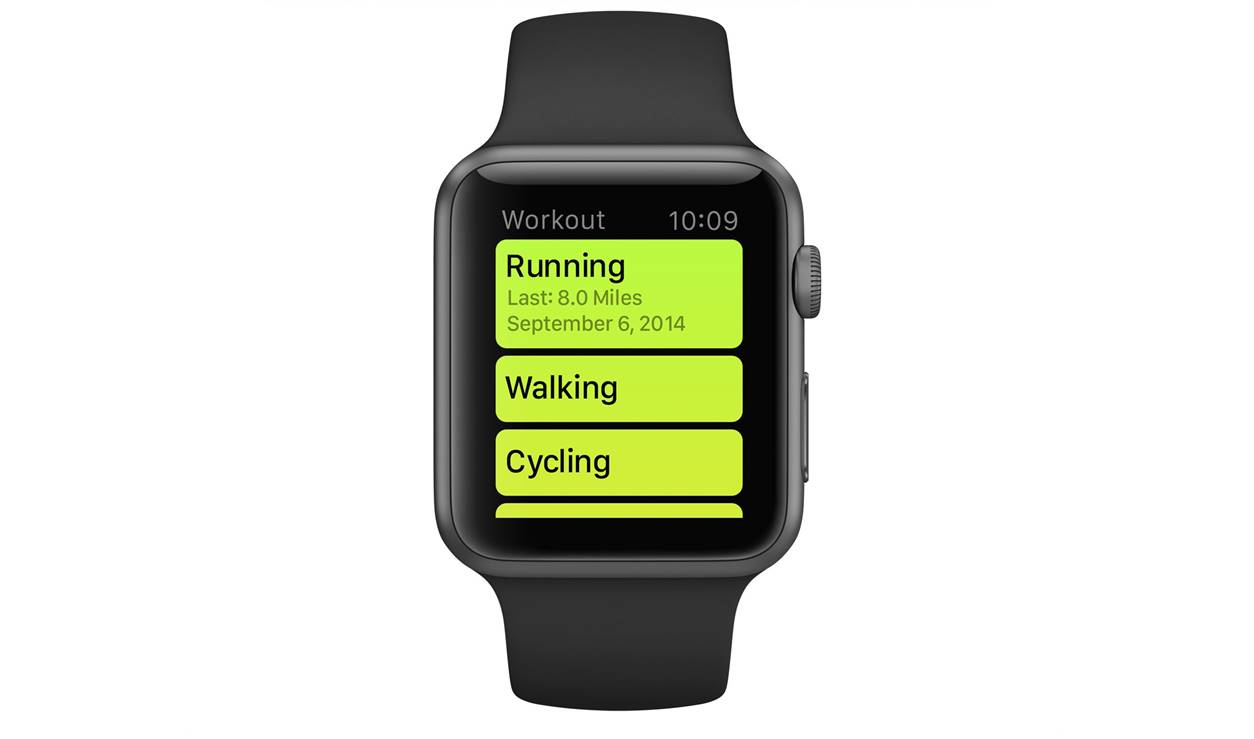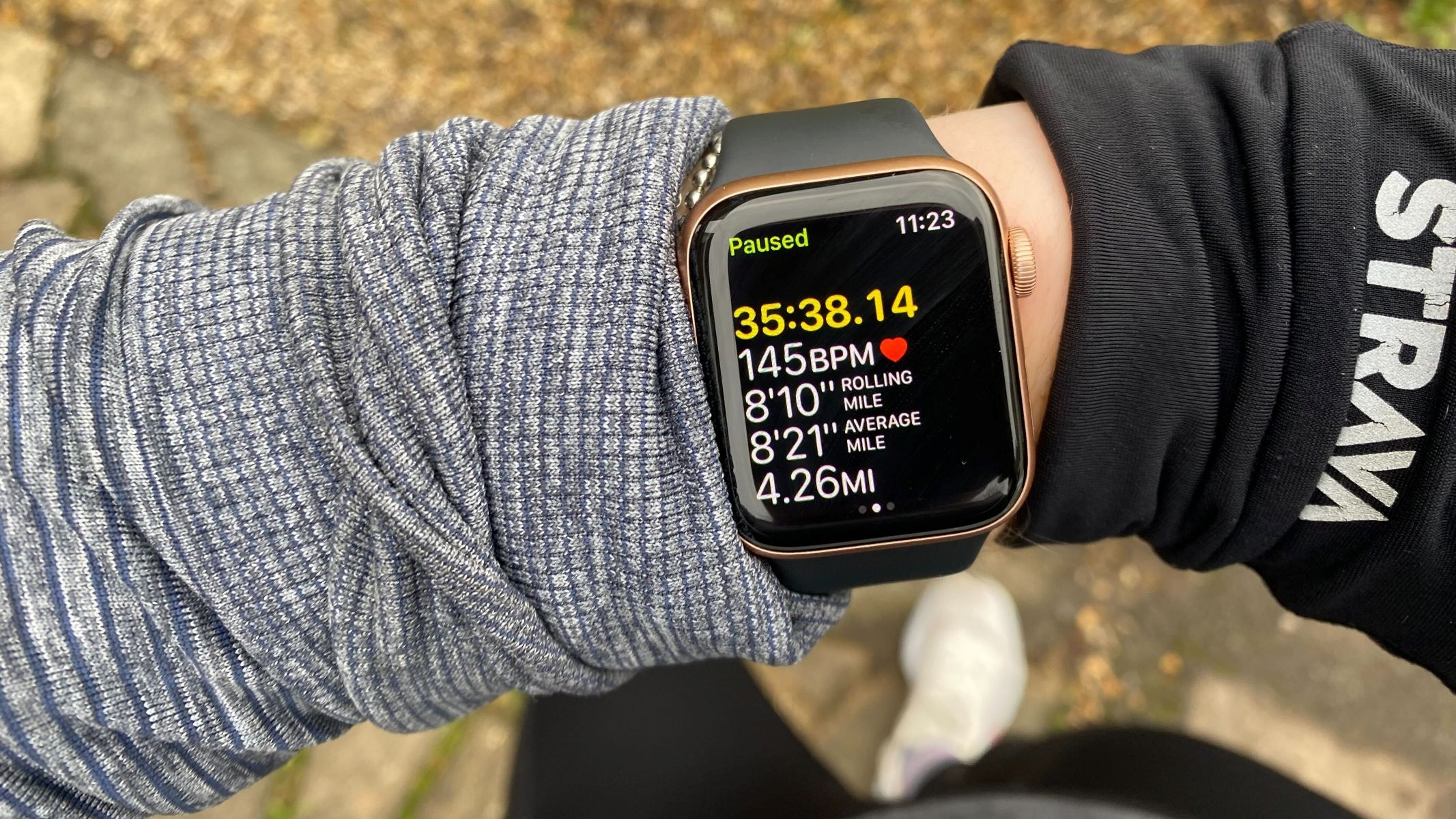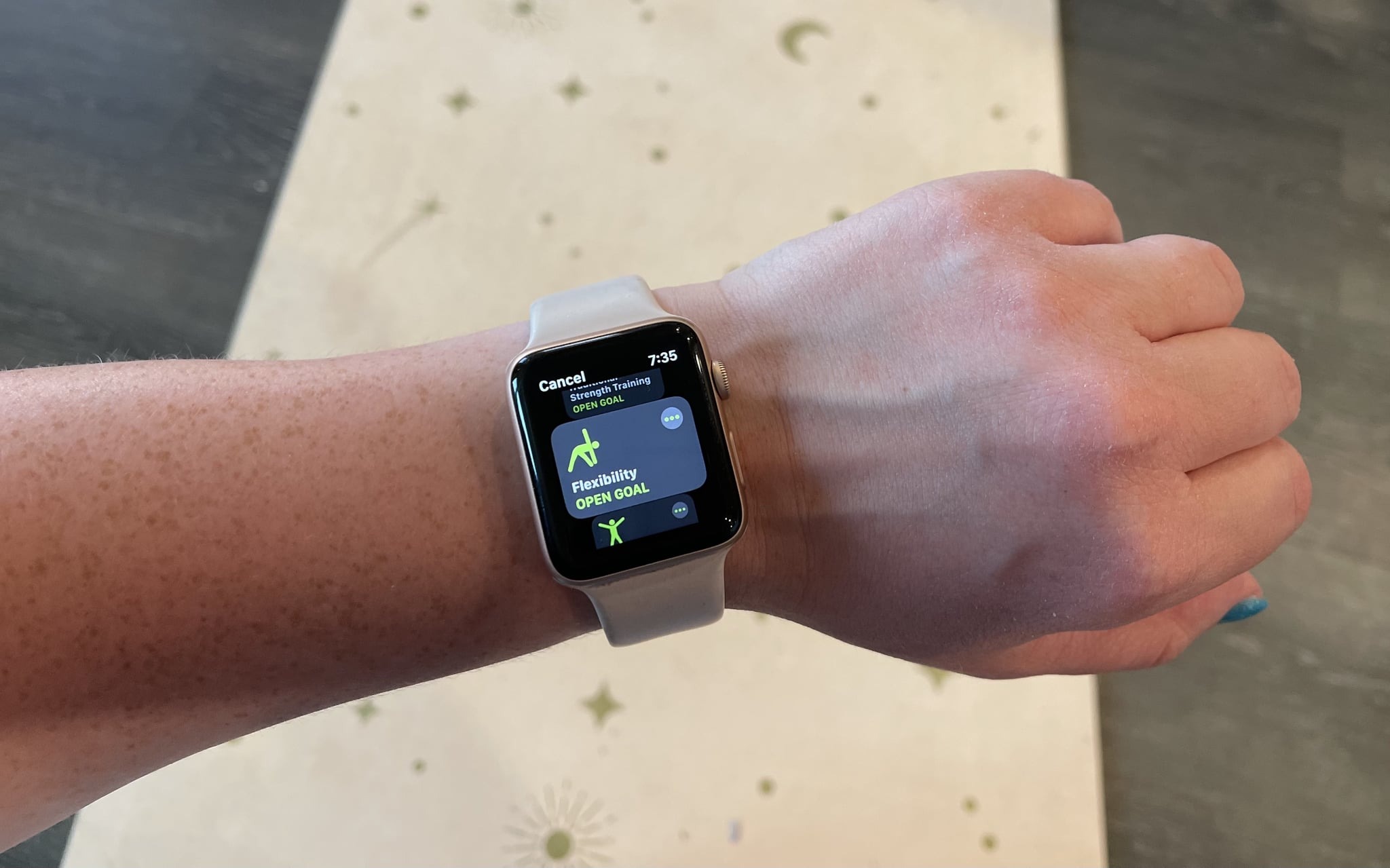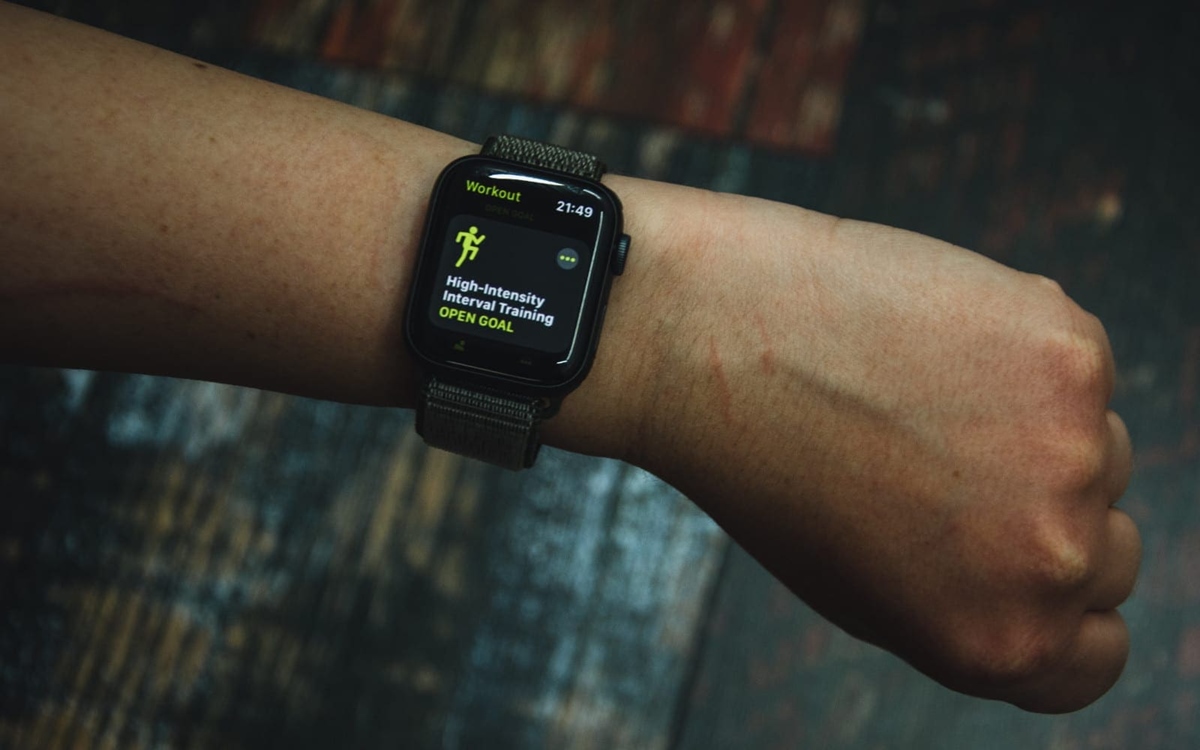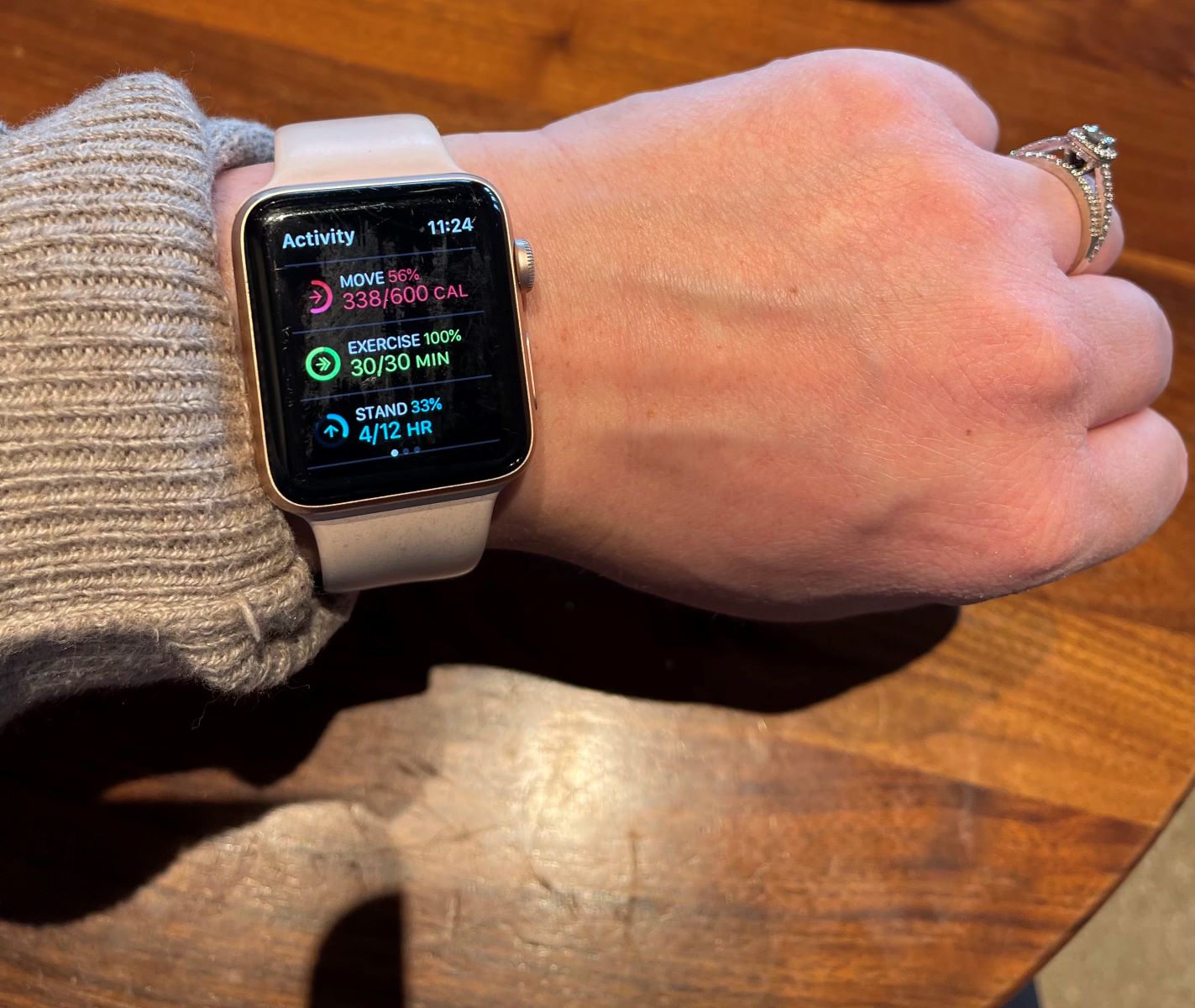Home>Misc>Featured>How Does Apple Watch Track Steps On Treadmill
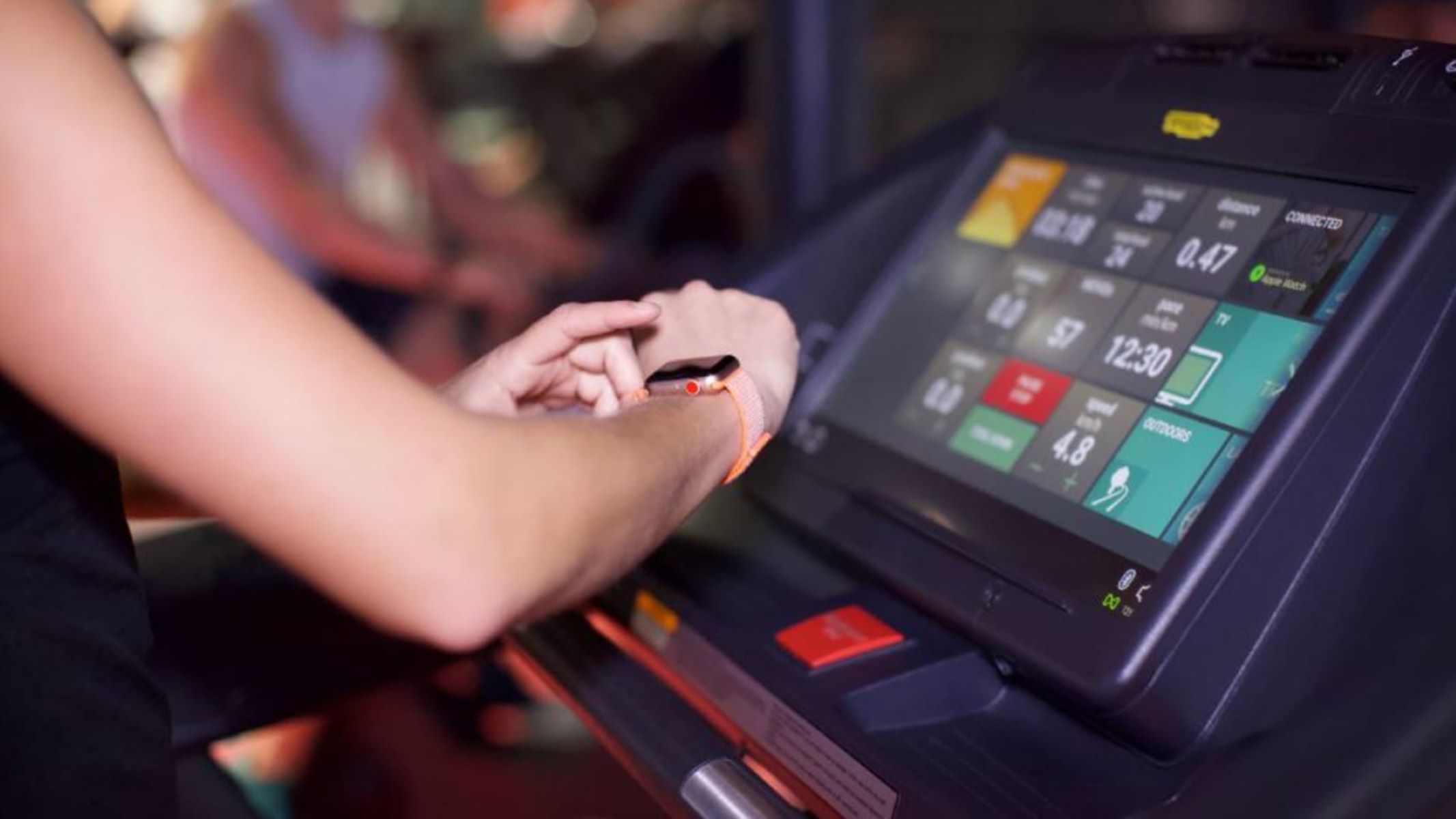

Featured
How Does Apple Watch Track Steps On Treadmill
Modified: January 2, 2024
Discover how Apple Watch uses advanced technology to accurately track your steps on a treadmill. Get featured insights into the incredible features of the Apple Watch.
Introduction
The Apple Watch has become a popular fitness companion for many individuals, providing a range of features to help users track and improve their activity levels. One of the key functionalities of the Apple Watch is its ability to track steps, giving users valuable insights into their daily movement and encouraging them to meet their fitness goals.
While tracking steps outdoors or on a treadmill may seem straightforward, there is a common question that arises regarding the accuracy and reliability of step tracking specifically on a treadmill. Many users wonder, “How does the Apple Watch track steps on a treadmill?” Understanding the technology behind this process can help shed light on how the device provides accurate step counts, regardless of whether you are jogging outside or running on a treadmill.
In this article, we will explore the science behind the Apple Watch’s step tracking capabilities on a treadmill, including the challenges it faces and the methods Apple employs to ensure accurate results. Additionally, we will provide some tips to improve the accuracy of step tracking on a treadmill, helping you get the most out of your Apple Watch fitness experience.
How Does the Apple Watch Track Steps?
The Apple Watch utilizes a built-in accelerometer to track your steps. An accelerometer is a device that measures acceleration and movement. In the case of step tracking, the accelerometer detects the subtle vibrations and movements caused by the motion of your body as you walk, jog, or run.
As you move, the accelerometer records the acceleration and deceleration of your arm motion, which is directly correlated with your step count. The Apple Watch then uses complex algorithms and data analysis to determine the number of steps you have taken based on the accelerometer data.
It’s important to note that the Apple Watch tracks steps based on your arm movement, as opposed to the movement of your legs. This means that activities such as cycling or using an elliptical machine may not be accurately counted as steps, as there is minimal arm motion involved in these activities.
Furthermore, the Apple Watch also takes into account other factors such as your height, weight, and stride length to provide more accurate step counts. By personalizing these settings in the Apple Health app on your iPhone, you can ensure that the step tracking feature aligns with your individual body characteristics and provides more precise measurements.
In addition to step tracking, the Apple Watch offers various other fitness features such as heart rate monitoring, workout tracking, and GPS tracking. Combined with the step tracking feature, these capabilities allow users to gain comprehensive insights into their overall fitness and activity levels.
Understanding Treadmill Running
Treadmill running has become a popular choice for individuals who want to stay active and maintain their fitness routines regardless of weather conditions or access to outdoor spaces. Running on a treadmill offers convenience, control over terrain and speed, and the ability to track various metrics such as distance, pace, and calories burned.
When running on a treadmill, your body moves in a slightly different manner compared to outdoor running. On a treadmill, your legs are essentially pushing off the moving belt, with minimal forward propulsion as compared to running on the ground. This difference in movement can affect the accuracy of step tracking, as the Apple Watch relies on arm motion to calculate steps taken.
Another important factor to consider is the incline setting on the treadmill. When running at an incline, your legs tend to lift higher and strike the treadmill with more force, which can also affect the arm motion and step tracking accuracy. Additionally, changes in speed and sudden stops or starts can further impact the consistency of step counts on a treadmill.
It’s essential to understand these nuances of treadmill running to better comprehend the challenges that the Apple Watch faces when tracking steps in this specific scenario. Despite these challenges, Apple has implemented measures to improve the accuracy of step tracking on a treadmill.
In the next section, we will delve into the unique features of the Apple Watch’s built-in accelerometer and how it assists in tracking steps during a treadmill workout.
Challenges in Tracking Steps on a Treadmill
While the Apple Watch is designed to provide accurate step tracking, there are several challenges that arise when it comes to tracking steps on a treadmill. These challenges stem from the differences in movement and mechanics compared to outdoor running.
One of the primary challenges is the lack of forward propulsion when running on a treadmill. As mentioned earlier, when running outdoors, the forward motion of your body is more prominent, resulting in a natural arm swing. This arm swing is critical for accurate step tracking on the Apple Watch, as it relies on the movement of your arms to determine steps taken.
On a treadmill, however, since your body is not moving forward in the same way, the arm swing may not be as pronounced. This can lead to underestimated step counts as the accelerometer may not detect the same level of arm motion as it would during outdoor running.
Another challenge arises from the consistent motion of the treadmill belt. Unlike outdoor running, where the ground moves relative to your body, on a treadmill, you are running on a platform that is continuously moving. This continuous motion can make it difficult for the Apple Watch’s accelerometer to detect subtle changes in arm motion accurately.
The incline settings on a treadmill can also present challenges. When running at an incline, your stride length may change, and your leg movements may become more pronounced, potentially affecting the arm motion and step tracking.
Additionally, sudden changes in speed, such as increasing or decreasing the treadmill’s pace, can impact the accuracy of step counts. The accelerometer requires a few seconds to adjust to the new pace, leading to potential discrepancies in step tracking during these transitional periods.
Despite these challenges, Apple has taken steps to address these issues and provide users with a more accurate step tracking experience on a treadmill. In the following section, we will explore the built-in accelerometer on the Apple Watch and how it helps overcome these challenges.
Apple Watch’s Inbuilt Accelerometer
The Apple Watch incorporates a highly advanced inbuilt accelerometer that plays a crucial role in accurately tracking steps, including on a treadmill. The accelerometer is a small sensor inside the device that measures acceleration forces acting on it.
The accelerometer in the Apple Watch is designed to detect even the slightest movements and vibrations, allowing it to capture the intricate motion patterns associated with walking, jogging, or running. This data is then analyzed using complex algorithms to determine step counts.
One of the key features of the Apple Watch’s accelerometer is its ability to differentiate between regular arm motions and incidental movements. It filters out any extraneous movements that may occur during daily activities, such as hand gestures or lifting objects, to ensure that only intentional steps are counted.
Moreover, the accelerometer also takes into account the intensity of the movement. It can distinguish between walking, jogging, and running based on the acceleration forces measured. This helps provide a more accurate assessment of the physical activity level and step count during treadmill workouts.
Additionally, the Apple Watch’s accelerometer integrates with various other sensors in the device, such as the gyroscope and GPS, to enhance step tracking accuracy. The gyroscope helps detect rotational movements, while the GPS provides location data that can be used to validate step counts during outdoor activities.
By utilizing advanced sensor technology and sophisticated algorithms, the Apple Watch’s inbuilt accelerometer is able to overcome many of the challenges associated with tracking steps on a treadmill. However, to ensure the highest level of accuracy, calibration is also an essential aspect to consider, which we will explore in the next section.
Calibration Process for Treadmill Tracking
To improve the accuracy of step tracking on a treadmill, Apple has implemented a calibration process that allows users to fine-tune their Apple Watch’s step tracking capabilities.
The calibration process requires users to perform an outdoor walk or run with their Apple Watch, during which the device gathers data about their natural stride length and movement patterns. This data is then used as a reference point for more accurate step tracking on a treadmill.
To calibrate the Apple Watch for treadmill tracking, follow these steps:
- Open the Workout app on your Apple Watch.
- Select “Outdoor Walk” or “Outdoor Run” as the workout type.
- Begin your walk or run outdoors, making sure to maintain a steady, natural pace.
- Allow the Apple Watch to track your activity for at least 20 minutes.
- Once you have completed your outdoor walk or run, end the workout and save it.
By completing this calibration process, the Apple Watch gathers data about your stride length and arm motion during outdoor walking or running. This data is then used as a reference to adjust the step tracking algorithms specific to your individual running style and body mechanics.
It is recommended to perform the calibration process periodically, especially if you notice any significant changes in your walking or running technique, such as changes in stride length or running form.
It’s important to note that the calibration process focuses on improving the accuracy of step tracking on a treadmill. The Apple Watch’s step tracking for outdoor activities usually does not require calibration, as it achieves a high level of accuracy through the use of GPS and other sensors.
Now that we understand the calibration process, let’s delve into the accuracy of the Apple Watch in tracking steps on a treadmill.
Accuracy of Apple Watch in Tracking Steps on Treadmill
The accuracy of the Apple Watch in tracking steps on a treadmill can vary depending on several factors, including the individual’s running style, the calibration process, and the specific challenges associated with treadmill running.
In general, the Apple Watch provides reasonably accurate step tracking on a treadmill when compared to outdoor walking or running. However, due to the differences in movement mechanics and the challenges mentioned earlier, there may be slight discrepancies in step count.
The calibration process plays a crucial role in improving the accuracy of step tracking on a treadmill. By calibrating the Apple Watch using an outdoor walk or run, users can provide the device with data about their stride length and arm motion that helps fine-tune the step tracking algorithms.
Even with calibration, it’s important to note that the Apple Watch’s step tracking on a treadmill is not flawless. Factors such as changes in speed, incline settings, sudden stops or starts, and individual running styles can still introduce slight variations in step counts.
Furthermore, environmental factors, such as interference from the treadmill’s vibrations or running on an uneven belt, can also impact the overall accuracy of the step tracking. It’s important to ensure that the Apple Watch is securely fastened to your wrist to minimize any potential movement discrepancies.
Despite these challenges, the Apple Watch’s step tracking on a treadmill provides a useful and reliable estimate of your steps taken and overall activity level. It allows you to track your progress over time, set fitness goals, and stay motivated to achieve your desired level of physical activity.
It’s worth noting that while step tracking is a valuable feature on the Apple Watch, it shouldn’t be the sole metric for assessing your overall fitness and health. It’s important to consider other factors such as heart rate, duration, and intensity of workouts to gain a more comprehensive understanding of your fitness levels.
Now that we have explored the accuracy of the Apple Watch in tracking steps on a treadmill, let’s move on to some tips to improve the accuracy of step tracking during treadmill workouts.
Tips to Improve Accuracy of Step Tracking on Treadmill
While the Apple Watch strives to provide accurate step tracking on a treadmill, there are several strategies and tips you can follow to enhance its accuracy and ensure you’re getting the most precise step count during your workouts.
1. Ensure Proper Placement: Make sure you wear your Apple Watch snugly on your wrist to minimize any extra movement that could affect the accuracy of the step tracking. The watch should be secure and positioned above the wrist bone.
2. Complete the Calibration Process: Perform the calibration process by initiating an outdoor walk or run to enable the Apple Watch to gather data about your stride length and arm motion. Calibrating your device helps fine-tune the step tracking algorithms specific to your running style.
3. Maintain Good Arm Motion: During treadmill running, consciously focus on maintaining a natural arm swing to ensure the Apple Watch can accurately detect and measure your steps. Keeping your arms relaxed and swinging freely will provide more accurate data to the onboard accelerometer.
4. Be Consistent: Try to maintain a consistent running style and pace throughout your treadmill workouts. Avoid sudden speed changes or abrupt stops, as these can impact the accuracy of step counts. Smooth and steady movements will yield more reliable results.
5. Consider Incline Adjustments: If you adjust the incline setting on your treadmill, be aware that it can affect your step tracking. Changes in leg motion and stride length may impact the correlation between arm movement and step count. Take this into account when interpreting your data.
6. Utilize Cross-Validation: To obtain a more comprehensive activity analysis, consider using additional metrics and sensors available on the Apple Watch. Features like heart rate monitoring and GPS can provide supplementary information and validate step counts during treadmill running.
7. Regular Maintenance: Check and ensure that your treadmill is in proper working condition. Uneven belts, incorrect calibration, or faulty sensors on the treadmill can contribute to inaccurate step tracking. Regularly clean and maintain your equipment to minimize potential issues.
By following these tips and best practices, you can improve the accuracy of step tracking on your Apple Watch during treadmill workouts, allowing you to have a clearer picture of your activity levels and progress towards your fitness goals.
Now that we have explored tips to boost the accuracy of step tracking on a treadmill, let’s summarize the main points covered in this article.
Conclusion
The Apple Watch offers a powerful solution for tracking steps and monitoring fitness levels, whether you are running outdoors or on a treadmill. While tracking steps on a treadmill presents unique challenges, the Apple Watch’s inbuilt accelerometer and calibration process help enhance the accuracy of step tracking in this specific scenario.
The Apple Watch utilizes its advanced accelerometer to detect arm motion and measure step counts during treadmill running. The calibration process further refines the step tracking algorithms based on your stride length and arm motion, improving the accuracy of the results.
Although the Apple Watch provides reasonably accurate step tracking on a treadmill, it’s important to consider factors that can affect the accuracy, such as changes in speed, incline settings, and running style. Environmental factors like treadmill vibrations and uneven belts can also impact tracking precision.
By following tips to improve the accuracy of step tracking on a treadmill, users can optimize the Apple Watch’s capabilities for more precise data insights. These tips include proper placement of the watch, completing the calibration process, maintaining good arm motion, consistency in running style, considering incline adjustments, utilizing cross-validation with other metrics, and regularly maintaining the treadmill.
Ultimately, the Apple Watch’s step tracking feature on a treadmill is a valuable tool for individuals aiming to monitor their activity levels, set fitness goals, and track their progress over time. However, it’s important to remember that step tracking should be viewed as part of a comprehensive approach to fitness, along with other metrics such as heart rate, duration, and intensity of workouts.
With its advanced technology and continuous software advancements, the Apple Watch remains a trusted companion for fitness enthusiasts, providing accurate step tracking both indoors and outdoors, helping users stay motivated and committed to their health and wellness goals.
